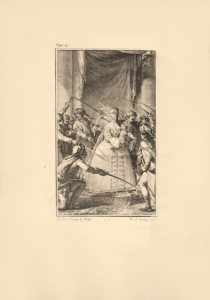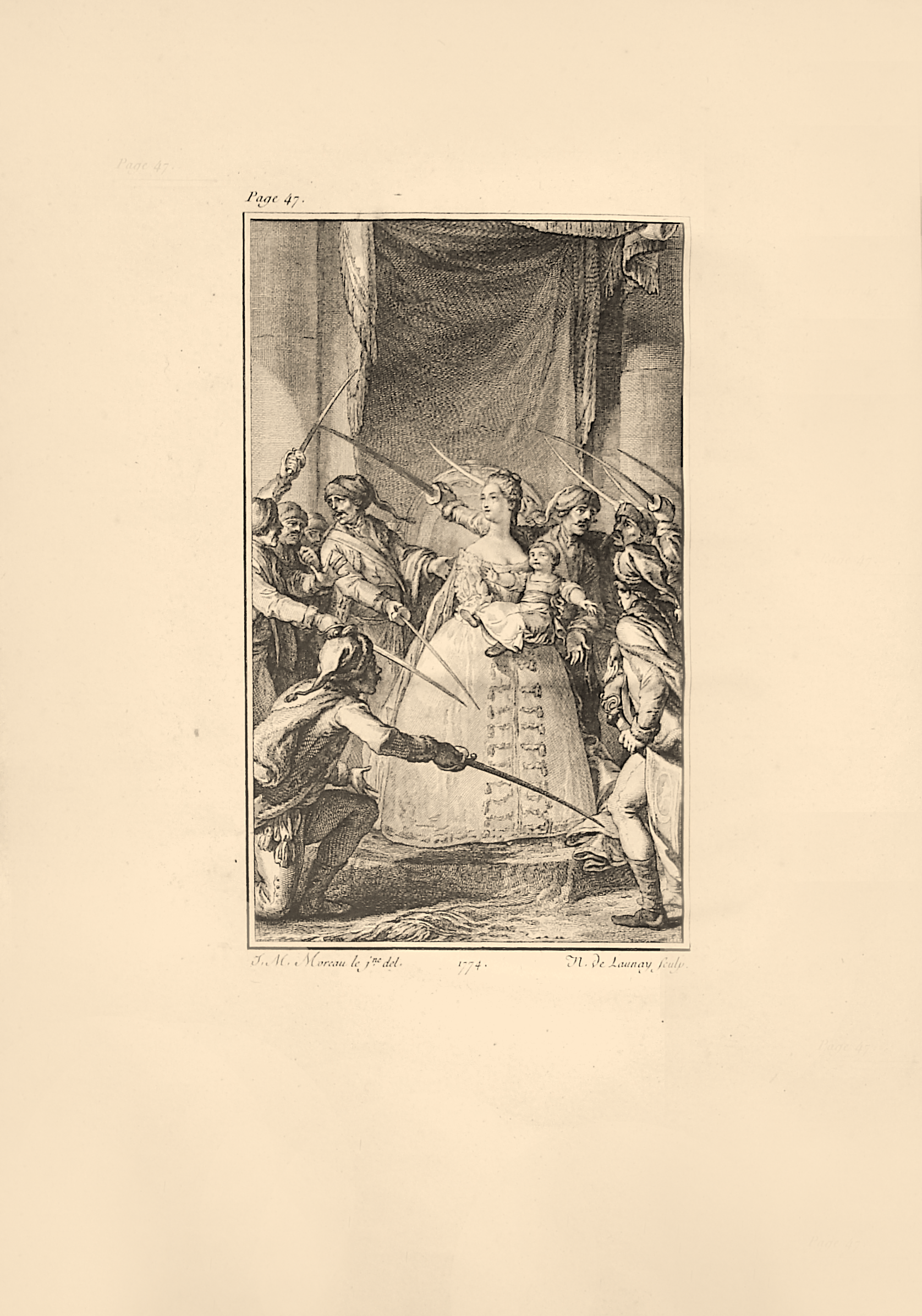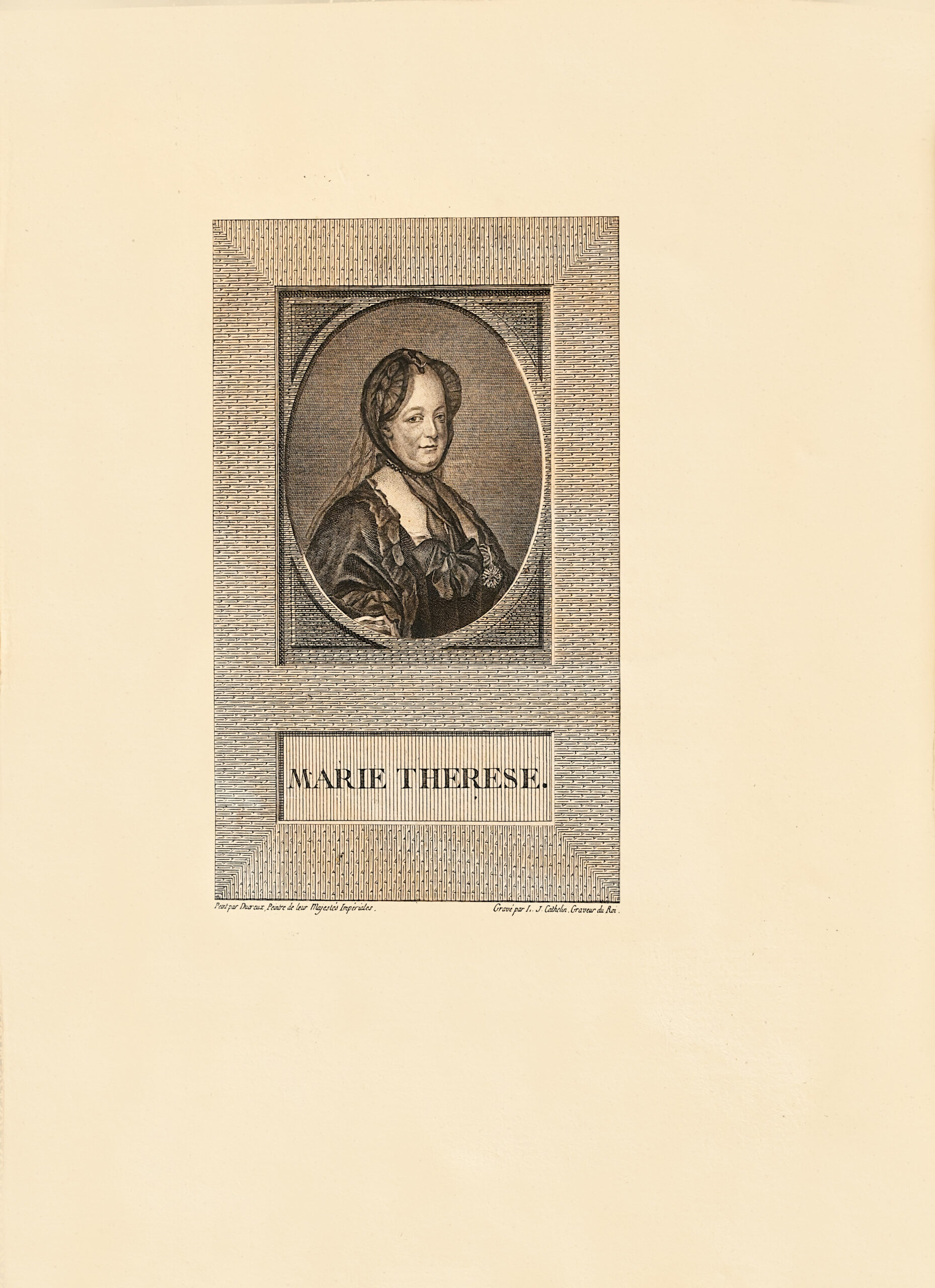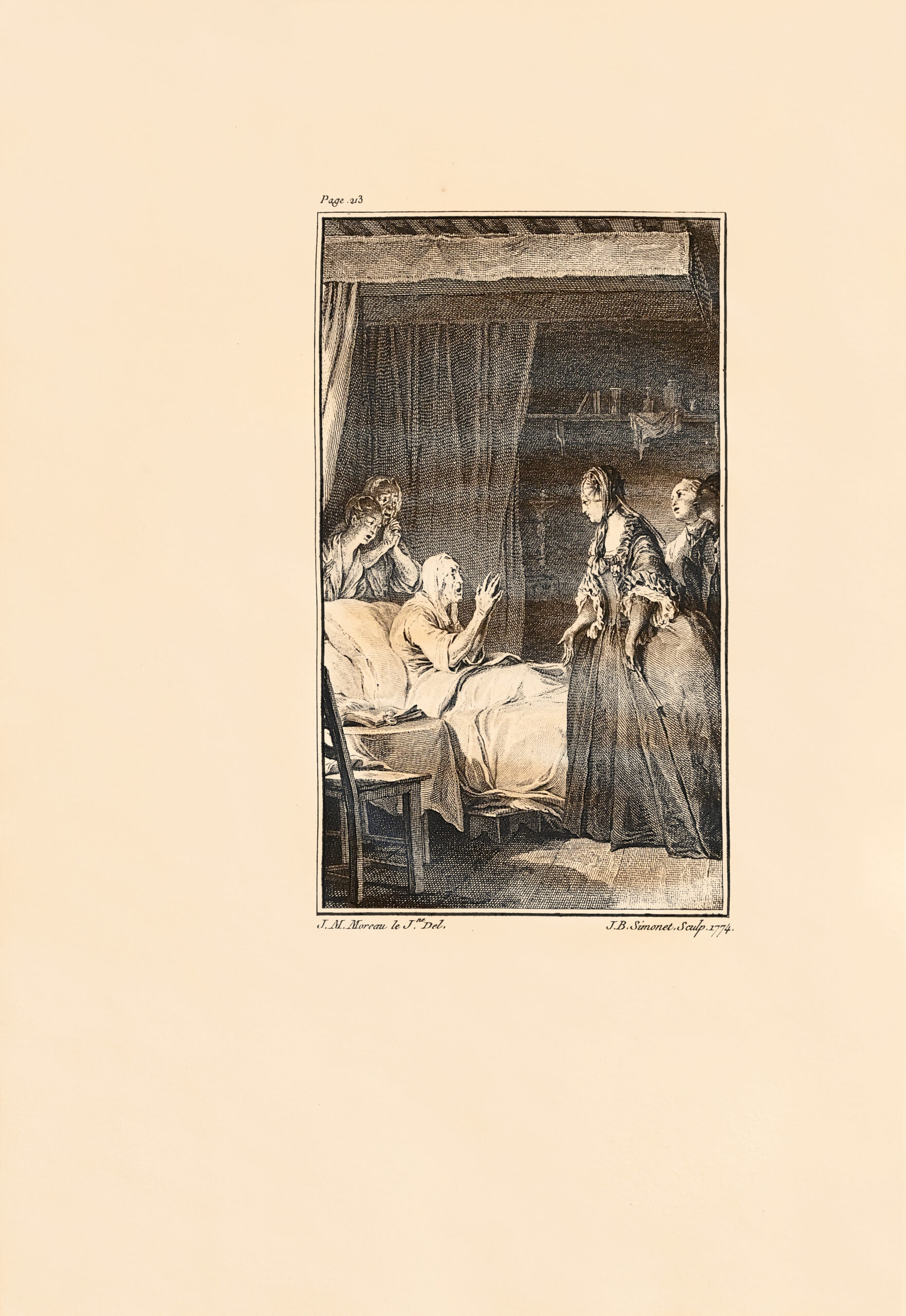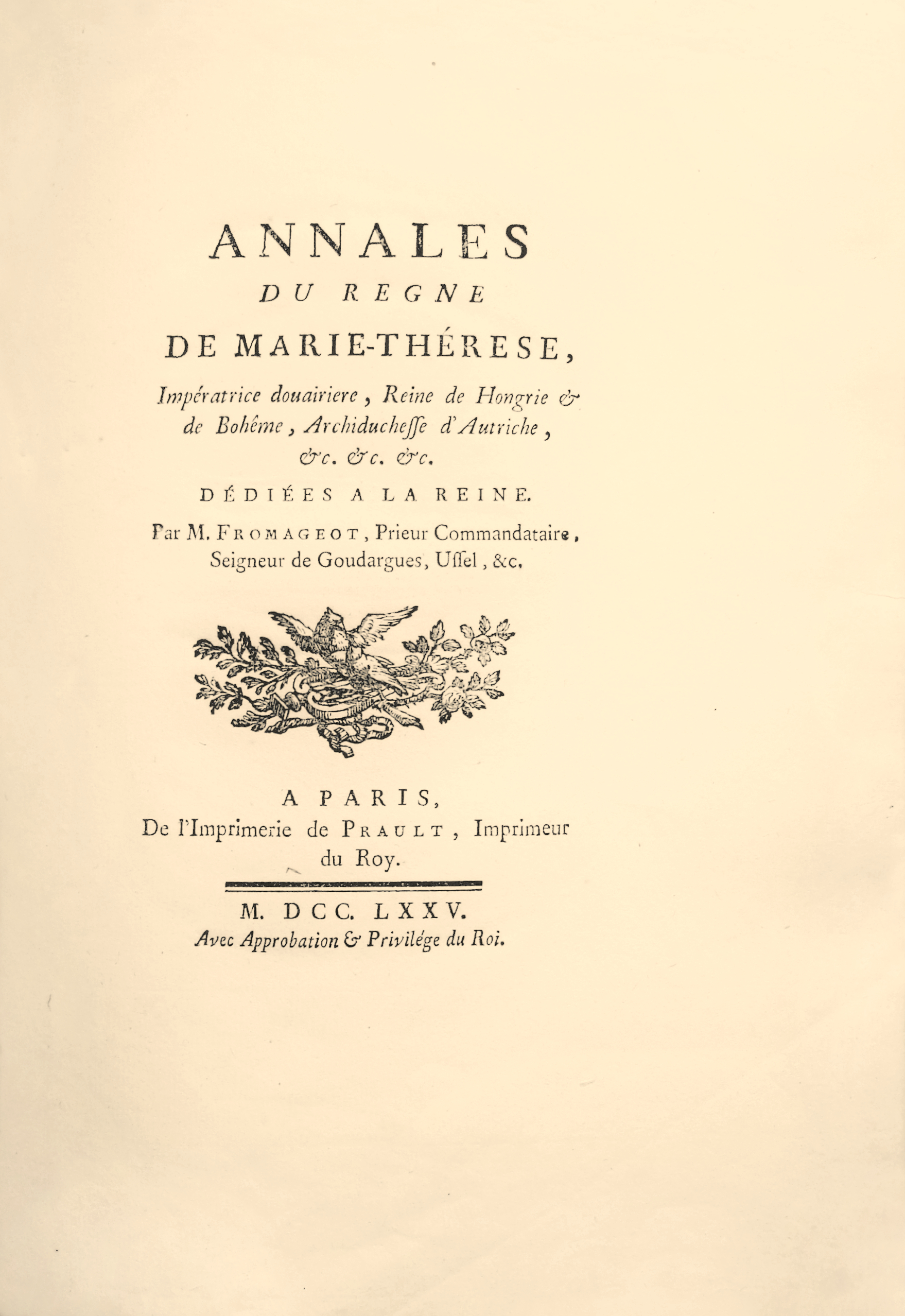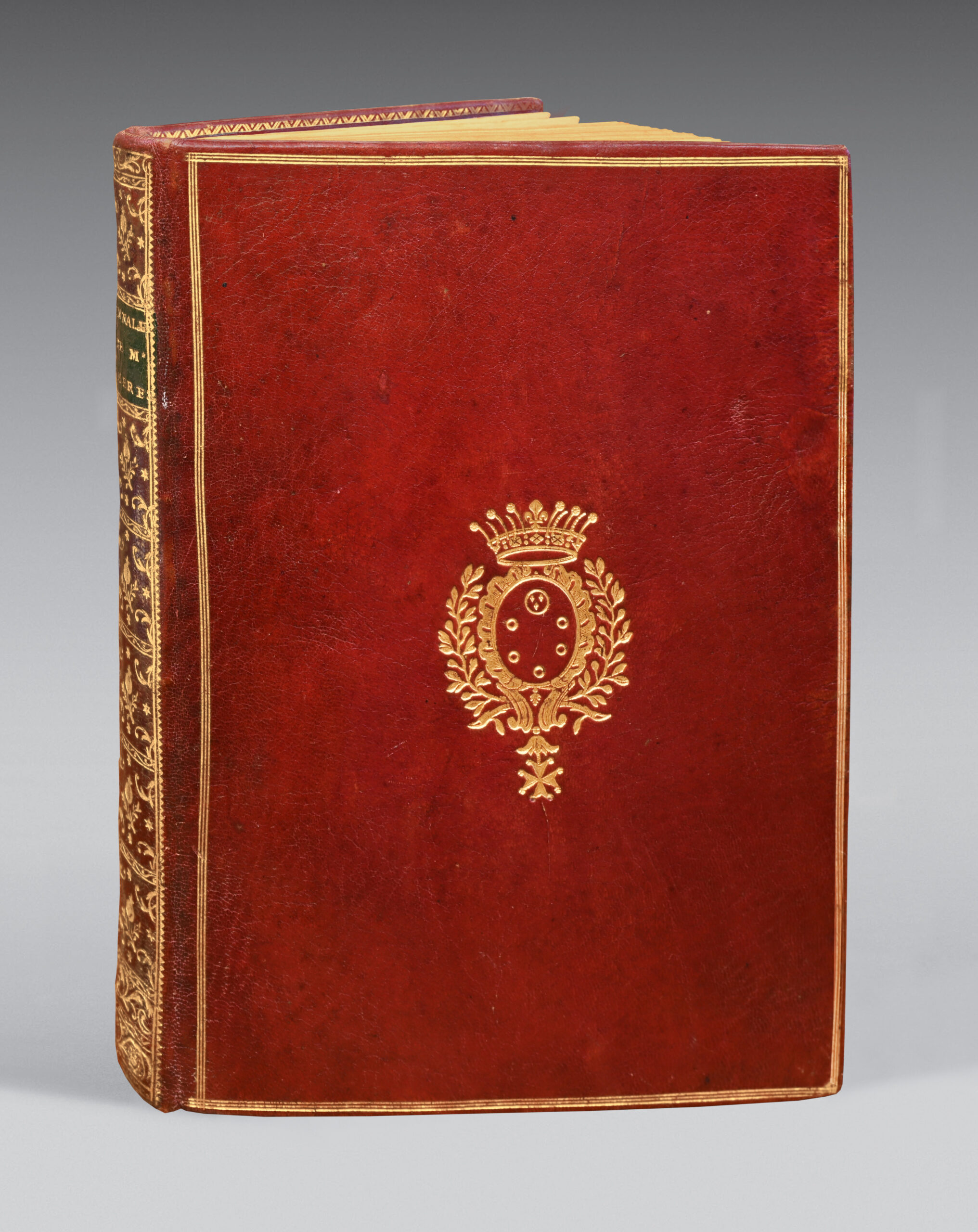A Paris, chez Prault, 1775.
1 volume 4to, (3) ll, 1 full-page portrait of Maria Theresa, 337 pp., (3) pp. of approval, 4 plates.
Full red morocco, triple gilt fillet around the covers, arms in center, decorated flat spine, green morocco lettering piece, gilt edges. Contemporary armorial binding.
250 x 188 mm.
First edition dedicated to Queen Marie-Antoinette, famous for the portrait of the Queen.
“One of the most successful works by Moreau le jeune.
Contains 1 portrait of Marie-Thérèse engraved by Cathelin, after Ducreux, 2 medallion portraits engraved after Moreau by Gaucher at the head of the dedication, and 4 figures by Moreau, engraved by Duclos, de Launay, Prévost and Simonet.” (Cohen 412-413).
The author, born in Beaune (Côte-d’Or) in 1738, was tonsured in the diocese of Autun and became tutor to a natural daughter of the Count of La Marche. He wrote a 16-volume course of studies for her, of which only 8 volumes, illustrated by Moreau, were published from 1772 to 1775, under the title Cours d’études des jeunes demoiselles. On August 25, 1772, the King granted him the priory of Goudargues (Gard), where he lived from then on. In 1775, he published Annales du règne de Marie-Thérèse, which was reprinted several times until 1786.
“‘If we collect,’ says Mr. Fromageot, ‘with such care the details of these great victories, these conquests that have immortalized a few warriors; if we welcome so favorably these stories, which present only the account of famous battles, of which so many thousands of men have been the unfortunate victims ; with what eyes should we view the annals of an Empress who, for 34 years, has governed one of the largest parts of Europe, whose every moment, since she ascended the throne, has been used to bring happiness to the various peoples who obey her; who seems to enjoy sovereign power only to make people happy? This is undoubtedly the most agreeable work that can be offered to the public. This is the idea we flattered ourselves with when we set out to collect some of those great deeds of Maria Theresa, which have made this illustrious Heiress of the House of Austria the object of veneration throughout Europe.’
We readily subscribe to this judgment of the author, & we are certainly very far from wanting to weaken the merit of a work which, from the point of view of the facts it presents, cannot be more interesting nor more dear to the faithful subjects of Maria Theresa, & to anyone who knows how to appreciate the brilliance of the virtue placed on the throne & which has become the source of public happiness”. (Journal historique et littéraire, vol. 35).
“Part of Father Fromageot’s work offers an interesting picture of Maria Theresa’s virtues & charitable acts, of her regulations, of her useful institutions of all kinds, either to reform abuses, simplify tax collection, establish order & discipline among her troops; or to enliven Agriculture, encourage the Arts, make commerce flourish, increase the population, circulate abundance in her vast States […].
The author only wrote these ‘Annales’ up to 1771. The reading of this work will give you, Sir, the greatest pleasure; it is a touching account of admirable traits of benevolence. Happy are the Peoples whose Sovereigns leave only such monuments to posterity! There are a few copies of this excellent book by M. l’Abbé Fromageot, printed in 4to format, priced at 12 livres in wrappers, & 15 livres bound. The 8vo is 6 livres in wrappers, & 7 livres 10 sols bound.” (L’Année littéraire, 1775, vol. 168).
Fromageot refused to take the oath to the Constitution and was accused of favoring federalism. Arrested on April 25, 1794, imprisoned in the citadel of Nîmes, he was condemned to death on July 11 and executed the same day.
“Among the works of this happy period, we should also mention Annales du règne de Marie-Thérèse (1775), a book dedicated to the young queen Marie-Antoinette, whose charming profile engraved by Gaucher can be found on the dedication leaf”. Baron R. Portalis.
A precious large paper copy, bound in contemporary red morocco with the Medici’s arms.
The coat of arms corresponds to the Medici family and is surmounted by the crown of the Dukes of Tuscany.
The Medici coat of arms is described as follows: D’or à six tourteaux mis en orle, cinq de gueules, celui en chef d’azur chargé de trois fleurs de lis d’or.
Originally, the coat of arms consisted of eleven balls Gules on a field Or. Cosimo the Elder reduced the number of balls to eight. His son Pierre settled for seven, including one charged with a fleur-de-lys in the center of the shield. In 1465, the latter had been granted the right to wear the fleur-de-lys of France by King Louis XI of France, as a reward for services rendered to the crown.
Lorenzo the Magnificent continued the simplification work, reducing the number of balls to six and placing the fleur-de-lysée at the top of the shield. Cosimo I finally fixed the coat of arms definitively, opting for an oval shield.
Provenance: from the Nicolao de Nobili library, with ex libris engraved with the motto Duce Minerva, Comité Fortuna.
